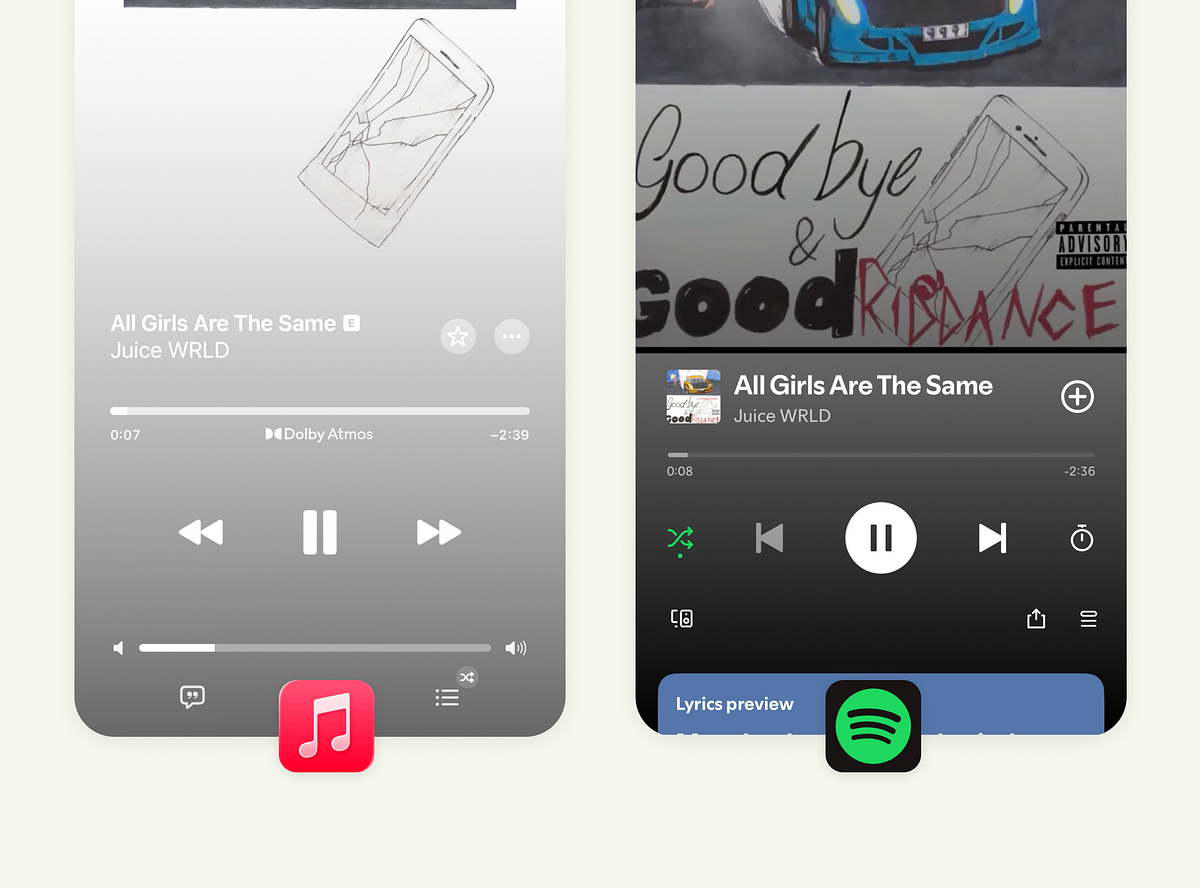
"Apple Music takes a calm, minimalist route. The interface feels almost meditative, spacious, centered, and distraction-free. But that visual stillness has trade-offs. The volume and track sliders look nearly identical, which could confuse new users. And given that most people adjust volume with physical buttons, that second slider arguably adds clutter. Spotify, in contrast, embraces structure. You see controls, states, and feedback clearly."
"Apple's lyric experience feels cinematic. Only the current line is highlighted, and the rest fades away softly. The typography is large and expressive, guiding attention exactly where it should be. It's less about singing along and more about immersion. Spotify's lyric UI is more inclusive; it shows more lines at once so users can follow, anticipate, and join in. The trade-off? Slightly reduced focus. The smaller type and dense layout work for engagement but not necessarily for deep reading."
Both services lead the music-streaming market and embody distinct design philosophies that shape user behavior. Apple Music adopts a calm, minimalist main player with spacious, centered layouts and visual stillness, but similar-looking volume and track sliders can create confusion and redundancy. Spotify embraces structured interfaces with clear controls, visible states, and high contrast—especially in dark mode—favoring usability and user control. Apple’s lyric presentation highlights a single cinematic line with large expressive typography to promote immersion. Spotify’s lyric UI shows more lines at once with smaller, denser type to support follow-along and social engagement. Apple keeps the song queue directly on the same screen.
Read at Medium
Unable to calculate read time
Collection
[
|
...
]